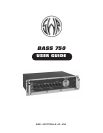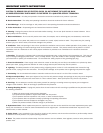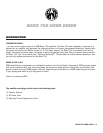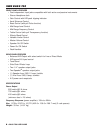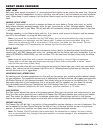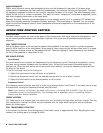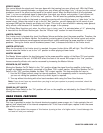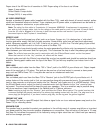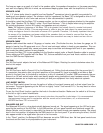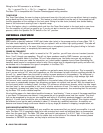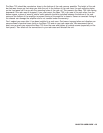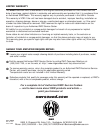
Wiring for the XLR connector is as follows:
Pin 1 = ground, Pin 2 = +, Pin 3 = – (negative) (American Standard)
The Bass 750 is compatible with Phantom Power-equipped mixing consoles.
TUNER SEND
The Tuner Send allows the user to plug an instrument tuner into this jack and tune up without having to unplug
and go back and forth from amp to tuner. This feature is totally isolated from the rest of the preamp and will
function regardless of the settings on the front panel. Being on a side chain (isolated) also avoids loading
down of the instrument causing a loss in dynamic range.
To use this feature, plug in a shielded patch cord from the Tuner Send output to the input jack on your tuner.
Turn the amplifier on and you’re ready to go. If you do not wish to monitor your sound during the tuning
process, switch the Speaker On/Off switch to the “off” position.
INTERNAL FEATURES
VACUUM TUBE (VALVE)
SWR installs a specially selected 12AX7 dual triode tube (valve) in the preamp section of every Bass 750. If
this tube needs replacing, we recommend that you replace it with a similar high quality product. This tube will
require replacement only in the event it becomes noisy or microphonic (sounds like glass tinkling in the back-
ground of certain notes), or completely fails causing no signal.
POWER ON TRANSIENT
When the Bass 750’s power switch is moved to the “On” position, you will hear a turn-on transient (sounds
like a “thud”) through your speakers. This will not harm speakers made by SWR, however, you may wait to
connect your speaker cable to the Bass 750 until after powering up. Just make sure you are not playing
through the unit when you make the connection, as it could cause a speaker fuse to blow. Eliminating this
transient would require a component called a relay. Since relays tend to degrade signal quality and often fail,
we decided not to incorporate this type of component in the Bass 750.
A FEW WORDS CONCERNING HEAT
Please be aware that the chassis of your amplifier can get quite warm during normal use. This is especially
true if you are using a 2.67 ohm total impedance, as this introduces the least efficient condition possible for
the unit (i.e., power drawn from the outlet in relation to power produced in the speakers). The difference in
these two figures can be quite high, basically resulting in the equivalent of putting a high wattage light bulb
inside a metal box—which would obviously get quite warm.
Furthermore, most musical instrument amplifiers on the market today utilize steel for their chassis, which in
most cases is considerably cheaper than aluminum and does not conduct heat as well. With the exception of
the front panel (which is made of steel), the Bass 750 utilizes an all aluminum chassis, which has less impuri-
ties than steel, is less susceptible to rust, and is a better conductor of heat. This results in the chassis acting
as a heatsink—drawing heat away from internal heat-producing components, thus extending their life and mak-
ing the Bass 750 a more reliable amplifier.
You should be aware of a heat-related condition known as “over biasing.” If one or more of the power amplifiers
in your Bass 750 becomes over biased, it may cause the unit to generate more heat than normal. This condi-
tion can be recognized by turning on your amplifier and letting it sit without speakers plugged in and without
playing it. If under these conditions your unit becomes quite warm, it may be over biased. This situation should
be attended to and can be easily remedied in about 15 minutes by a qualified technician. An amplifier can
become over biased through continuous vibration or by any large jolt received in shipping, transportation, etc.
RACK MOUNTING INSTRUCTIONS
To preserve the beauty and reliability of your amplifier, we recommend that you install your amplifier in a rack
case. The Bass 750 is completely ready to be rack mounted and needs no additional parts or accessories
other than the case itself. The Bass 750 takes up three full rack spaces (it is 5-3/8" high). If the rack that
you mount the Bass 750 in requires that the rubber feet on the bottom of the chassis be removed, please
remember to REPLACE the screws, as they help to reinforce the chassis.
8 • BASS 750 USER GUIDE



